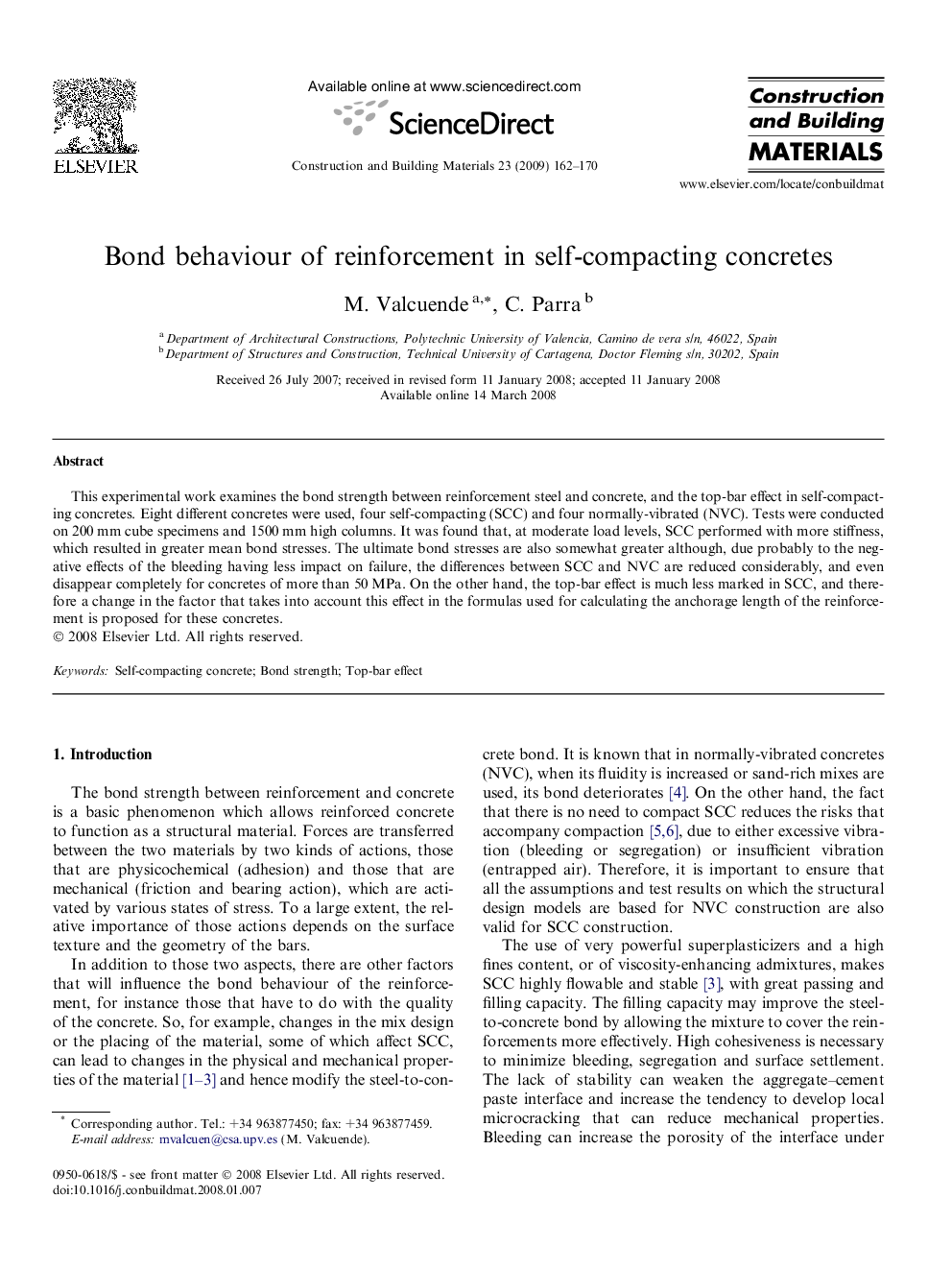| کد مقاله | کد نشریه | سال انتشار | مقاله انگلیسی | نسخه تمام متن |
|---|---|---|---|---|
| 260656 | 503667 | 2009 | 9 صفحه PDF | دانلود رایگان |

This experimental work examines the bond strength between reinforcement steel and concrete, and the top-bar effect in self-compacting concretes. Eight different concretes were used, four self-compacting (SCC) and four normally-vibrated (NVC). Tests were conducted on 200 mm cube specimens and 1500 mm high columns. It was found that, at moderate load levels, SCC performed with more stiffness, which resulted in greater mean bond stresses. The ultimate bond stresses are also somewhat greater although, due probably to the negative effects of the bleeding having less impact on failure, the differences between SCC and NVC are reduced considerably, and even disappear completely for concretes of more than 50 MPa. On the other hand, the top-bar effect is much less marked in SCC, and therefore a change in the factor that takes into account this effect in the formulas used for calculating the anchorage length of the reinforcement is proposed for these concretes.
Journal: Construction and Building Materials - Volume 23, Issue 1, January 2009, Pages 162–170